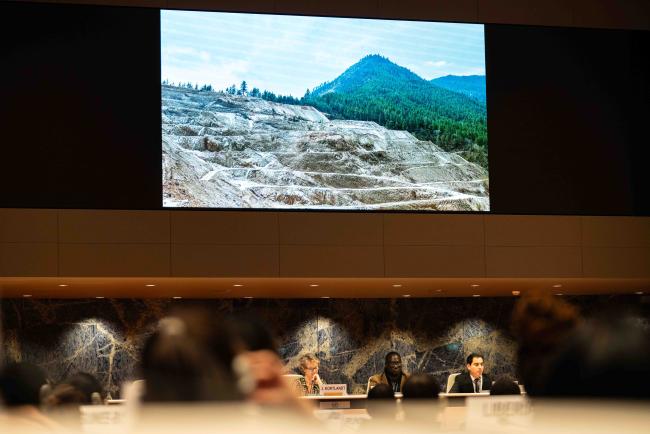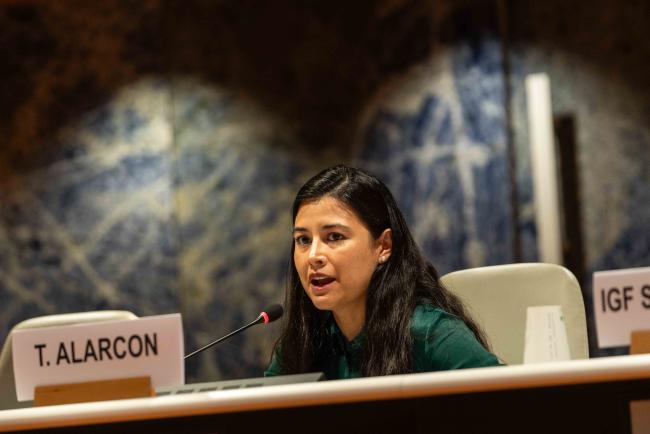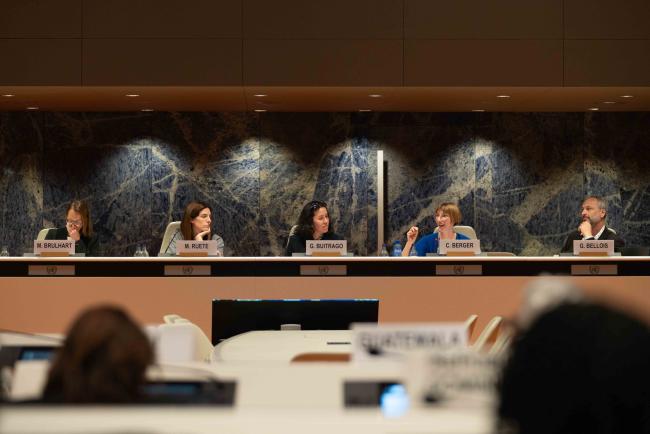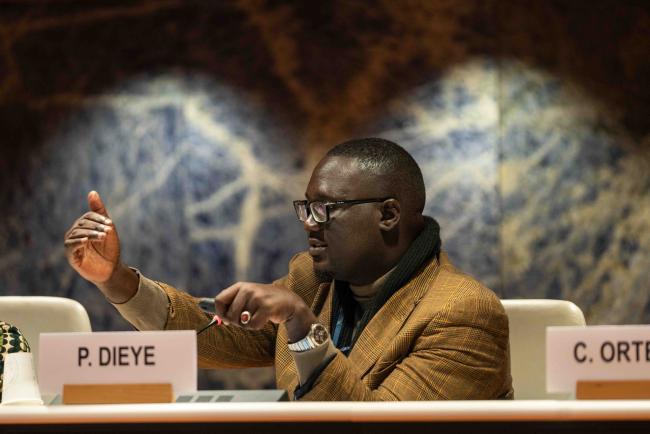As one panelist declared, “We are men and women who have come together with a single goal: How can we ensure that mining is more responsible.”
On its second day, the 20th Annual General Meeting (AGM) of the Intergovernmental Forum on Mining, Minerals, Metals and Sustainable Development (IGF) opened with a discussion on how to “put people first” in mining. Other sessions looked at gender equality, global mining standards, and how to protect nature through the increased demand for critical minerals during the energy transition.
The first session, on putting people first, started with a presentation by Thelma Halim, IGF Secretariat, on the recent update of the IGF’s flagship Mining Policy Framework (MPF), with strengthened provisions on human rights. Maria Andrea Echazu, UN Human Rights, focused on four dimensions of human rights in mining: the state’s duty to protect; human rights due diligence; Indigenous Peoples’ rights, including free, prior, and informed consent (FPIC); and meaningful participation by affected communities at all stages of projects.
Alvaro Pardo, Colombia, shared his country’s new vision on mining and list of critical minerals, which were motivated by rising sovereignty, and human rights and environmental concerns. Tatiana Alarcon, Engineers Without Borders Canada, presented the Guidance for Disclosure on Human Rights Due Diligence in Mining Sector Procurement.
In the discussion on gender equality, Hasana Jummai Shaaba, Nigeria, described policy initiatives intended to address the social, economic, and political barriers preventing women from participating in or equitably benefiting from the mining industry. Katherine Maldonado, Board Member, National Network of Participatory Monitoring Committees in Peru, described how women have taken active roles in monitoring Peruvian mining operations.
Javier Silva, Sociedad Química y Minera (SQM), discussed a Chilean public-private partnership which co-creates social interventions aimed at improving women’s health, economic independence, and labor participation in the Atacama La Grande territory. Mariangela Linoci, UN Trade and Development (UNCTAD) called for evidence-based research on gender in the mining sector, including on the role of women in the upstream part of the supply chain.
On global standards, Grégoire Bellois, IGF Secretariat, shared the IGF’s new briefing note, which provides a guide to the current global standards landscape. Gelkha Buitrago, Global Reporting Initiative (GRI), introduced the GRI’s “sector standard for mining” adopted in 2024. Marina Ruete, IGF Secretariat, reviewed how the Mining Policy Framework incorporates international good practice across the full mining life cycle.
Michele Brulhart, Executive Director, The Copper Mark, discussed the draft Consolidated Mining Standard Initiative (CMSI). She explained that while it is built on the existing standards of its four partner organizations, the CMSI seeks to reduce complexity and ease barriers to adoption and implementation. She stressed the draft CMSI is open for public comment until 16 December 2024.
Christina Berger, Extractive Industries Transparency Initiative (EITI), reviewed how the EITI is structured and operates. She emphasized the obligation for governments to disclose information along the extractive industry value chain.
At the invitation of the moderator, one audience member described the Initiative for Responsible Mining Assurance (IRMA), which provides independent, third-party, site-level audits of industrial-scale mine sites for all mined materials. Another attendee mentioned the Global Battery Alliance’s work on bringing more transparency to impacts across the battery value chain and ensuring it is sustainable, circular, and responsible by 2030.
The session on protecting nature started with a live audience survey on the biggest challenges facing nature. Pathé Dieye, Senegal, illustrated the “mitigation hierarchy” concept with an example involving his country’s Niokolo-Koba National Park. Isabel Ashman, World Economic Forum (WEF), reported that an upcoming WEF report identifies land-use change, pollution, water use, and greenhouse gas emissions as the top four drivers of biodiversity loss in the mining and metals sector.
Joyce Kortlandt, the Netherlands, emphasized the importance of Strategic Environmental Assessments (SEAs) for governments. She explained that SEAs complement Environmental Social Impact Assessments (ESIAs) by taking into account both environmental and social considerations.
In the morning, before the formal session started, a commodity briefing was held on nickel, and a lunch side event examined case studies of successful mine closures, focusing on closure plans and social aspects of mine closure.
To receive free coverage of global environmental events delivered to your inbox, subscribe to the ENB Update newsletter.
All ENB photos are free to use with attribution. For the 2024 IGF AGM please use: Photo by IISD/ENB | Mika Schroder
Session 6: Critical Minerals and Gender Equality

Camila Pereira Rego Meireles, Technical Officer, Mining, Extractives, Energy and Manufacturing, International Labour Organization

Mariangela Linoci, Economic Affairs Officer, Trade, Gender and
Development Programme, UN Trade and Development (UNCTAD)
















































